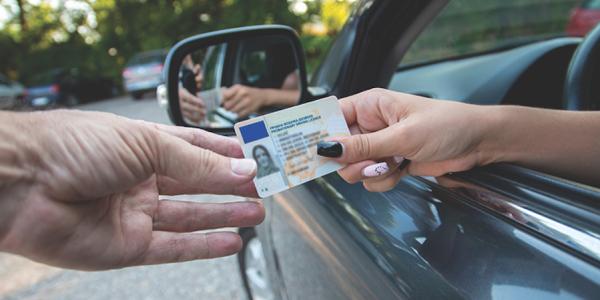In 2023, Rhode Island, Massachusetts, and Minnesota joined a growing list of states that allow undocumented immigrants to obtain driver’s licenses if an applicant can provide certain documentation, such as a foreign birth certificate or passport and evidence of current residency in the state. Altogether, 19 states and the District of Columbia have similar legislation in place. And lawmakers in other states, such as Michigan and Oklahoma, have introduced similar legislation.
In many cases, these laws were passed based on the premise that they would keep the roads safer by allowing undocumented immigrants to drive legally and obtain insurance. But new research from Washington University in St. Louis provides evidence that these laws also indirectly improve the overall health and well-being of immigrant mothers and their babies.
The research, published Feb. 26 in the Journal of Health and Social Behavior, found that implementing license laws is associated with improvements in birth weight — a critical measure of early development with long-term health implications — for babies born to Mexican and Central American immigrants.
The authors also noted a decline in preterm birth rates between 2008-2021 in states that enacted license laws compared with those that did not, though rates in both groups declined over time.
“Our study’s findings underscore how states’ extension of legal rights to immigrants can improve the health of the next generation,” said Margot Moinester, study co-author and an assistant professor of sociology in Arts & Sciences at WashU.
“Previous research has demonstrated that restrictive immigration policies and practices contribute to poor health outcomes for immigrant families, but our study is among the first to demonstrate a positive relationship between inclusive immigration policies and improved health.”
Connecting the dots
To study the connection between license laws and birth outcomes, Moinester and co-author Kaitlyn K. Stanhope, at Emory University, examined birth records for more than 4 million singleton births born to Mexican and Central American immigrants between 2008-2021 living in states that adopted these laws during the study period. They also tracked how many months prior to conception the law was implemented to assess how the relationship between the implementation of a license law and changes in perinatal health — that of pregnant people and their babies before, during and after birth — over time.
Finally, as a control measure, they compared their findings with outcomes for U.S.-born, non-Hispanic white pregnant people living in these states, but found no correlation between the implementation of a license law and birth weight in this population.
The research established a correlation between these laws and improved birth outcomes among babies born to Mexican and Central American immigrants, but stopped short of explaining why the correlation exists. According to Moinester and Stanhope, these laws likely influence perinatal health by lessening deportation fears and stress. It’s well known that stress prior to and during pregnancy can increase risk of adverse birth outcomes, including low birth weight and preterm birth.
“By reducing the criminalization of immigrants, driver’s license laws may lessen deportation fears and subsequent stress, potentially improving birth outcomes,” Stanhope said.
Because stress prior to conception — not just during pregnancy — can affect birth outcomes, it’s likely that the strength of the association would increase over time, she added.
“While we see stress as one key mechanism through which these license laws may improve perinatal health, we also think it is possible that the laws could lead to improved birth outcomes by increasing immigrants’ access to financial resources, including better-paying jobs and more weekly work hours,” Moinester said.
The authors also hypothesized that the laws would improve immigrants’ perinatal health by making it easier to access timely prenatal care. However, contrary to their hypothesis, they observed a slightly lower probability of first-trimester entry into care for individuals in states with license laws. According to the authors, one possible explanation could be that immigrants living in these states already had high rates of early prenatal care, meaning there was little room for improvement. Another possible explanation could be that access to a driver’s license was not enough to counteract other barriers, such as a lack of insurance, language differences and distance to care.
Changing immigration landscape
Over the past two decades, states have emerged as important players in the immigration policy arena, passing immigration legislation at a scale not seen in over a century, the authors said.
“There’s been a lot of focus on the extreme measures taken by some states to keep immigrants out and limit their access to services and benefits, but many states have responded by affirming their support for immigrants,” Moinester said.
“In fact, more than half of the states that have enacted license laws did so after 2015, when Donald Trump began his first campaign and made immigration enforcement a key issue.”
According to Moinester, the findings from this study highlight the potential of an individual state policy to positively shape the lives of Mexican and Central American immigrants and their children amid a highly conflictual federal and state immigration policy climate.
Because government-issued IDs are required to access a range of economic and material resources critical to health, including bank accounts, utilities, prescription medications, housing and safety net programs — plus more job opportunities — it’s likely these laws have other important health implications, Moinester said. More research is needed to better understand the health implications of these policies and to inform future policy decisions.
Originally published on The Source.





